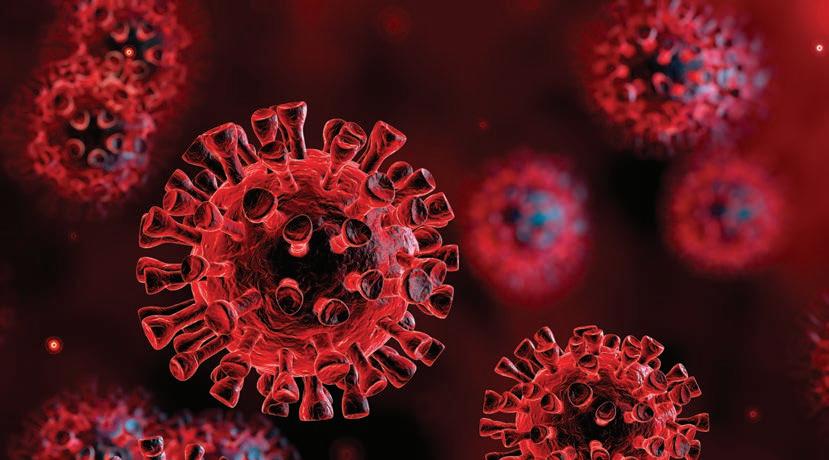
5 minute read
News Splash
Counting down to zero
NSW will attract $11.6 billion of private investment and create 2400 new jobs under the Berejiklian government's ambitious 10- year plan to reach net zero emissions by 2050. The plan, the first of its kind in Australia, will drive about two-thirds of the investment to regional and rural NSW and is expected to save households $40 a year on electricity bills. It will be "the foundation for the state's action on climate change" and will also deliver a 35 per cent emissions reduction from 2005 levels by 2030. For more details, follow this link: Read more >

ARBS Exhibition rescheduled for 2021
The ARBS Exhibition has rescheduled and will be held next year in Melbourne Exhibition Centre in 2021 from February 15-17, 2021.
The dates were announced by ARBS exhibition manager, Sue Falcke, allowing exhibitors to recommence planning for the three-day event.
“In the interim we are also very excited to announce our enhanced digital offering coming soon on our website,” Falcke said. For more details visit the ARBS website: Click here >
Kicking up a stink
Once again, the Corona Virus is in the news for reasons you’d least expect! Due to the pandemic, resulting in the reported toilet paper panic buying and hoarding across the country has resulted in an increase in ‘fatbergs’ in sewerage system, due to an increase in wet wipes being flushed down the toilet.
As a direct result, Sydney Water reported last month a 22% rise in blockages due to non-flushables in the sewer network.
Read more >
NABERS essentials
Looking to upskill during lockdown? Want to learn more about NABERS and how we can make buildings more energy, waste and water efficient? Our online NABERS Essentials course is currently available FOR FREE to help train Australia's workforce during the covid19 crisis. Learn about the history and plans for the program, the spaces NABERS rates, why you should get a rating and how to improve it, the different parties involved and the legislation applicable. This course is open to any member of the public or sustainability professional.
Read more >
772 cranes working across Australia as construction deemed essential service during COVID-19
According to the release of the Q1 2020 RLB Crane Index®️, there are currently 772 cranes working on key projects across Australia as construction is deemed an essential service during the COVID-19 crisis by all governments (Federal and State). Construction contributes 9% to the total Australian economy.

Looking around the country, Sydney continues to be the main driver of the crane count. Of the 772 cranes sighted across Australia, 299 were in Sydney, 196 in Melbourne, 58 in Brisbane, 37 in Perth, 33 on the Gold Coast, 27 in Canberra, 15 in Adelaide, 15 in Wollongong, 11 in the Sunshine Coast, 17 in Newcastle, 4 in Hobart and 1 in Darwin.
Both Melbourne and Sydney saw falls in crane numbers but in different sectors. Melbourne suffered falls in residential cranes (from 149 to 122) but Sydney saw falls in both commercial (from 44 to 32) and education cranes (from 12 to 3).
According to the RLB Crane Index®️, five cities observed more cranes on the horizon (Brisbane, Canberra, Newcastle, Perth and the Gold Coast) and six had lower numbers (Adelaide, Central Coast, Hobart, Melbourne, Sydney and Wollongong). Two cities remained the same (Darwin and the Sunshine Coast). Download the report here: Click here >
Zero emissions means choosing between bulky, low-range battery power or the emerging hydrogen fuel cell
Meet the Toyota Sora bus; a hydrogen fuel cell bus which will take to the streets of Japan as part of the 2021 Olympics in Tokyo.
As Tokyo gears up to host next year's summer Olympic and Paralympic Games, a major sponsor and the world's largest vehicle producer has rolled out a game-changer that is ... well, the size of a bus.
That's because it is a bus: a production-line fuel cell hydrogen bus.
These state-of-the-art buses will produce water as exhaust and have been decked out with all the latest gadgets to improve commuter comfort, safety, and overall vehicle performance.
Click here > Building back better for the natural environment
Overwhelming loss to our animals, plants and landscapes came as a result of Australia’s recent bushfires, accelerating the rate of our declining biodiversity toward what researchers are calling ‘biological annihilation’.
“Catastrophic events such as these drive us to design innovative solutions which avoid residual impacts, improve biodiversity values, and mitigate impacts on connectivity to strengthen our communities’ resilience to future events, " says Graham Pointer, WSP's Future Ready Lead in Australia.
Read more >

Preventing Covid-19 spreading in buildings
REHVA has produced interim guidance on the operation and use of building services. It is primarily aimed at offices, schools etc where only occasional occupancy by infected people is expected, and the recommendations they make are based on evidence from SARS-CoV-1, which occurred in 2003-04.
The guidance document focuses on the two dominant transmission routes (large droplets/particles emitted when sneezing, coughing or talking, and surface contact), but also comments on a faecal-oral transmission route. It notes that coronavirus particles remain active in common indoor air conditions for up to three hours, and two to three days on room surfaces, and questions whether keeping 1-2 metre from an infected person might be enough.
From an airborne perspective REHVA recommends:
- Increase air supply and exhaust ventilation - supply as much outside air as possible - Toilet Exhaust systems should be left on 24/7 (to reduce faecal-oral transmission risks) - Turn off rotary heat exchangers - Avoid central recirculation by closing recirculation dampers - Fan coil units that use local circulation, should be turned off or cleaned regularly.
Obviously these measures have energy implications #CIBSE
For more details, follow this link:










